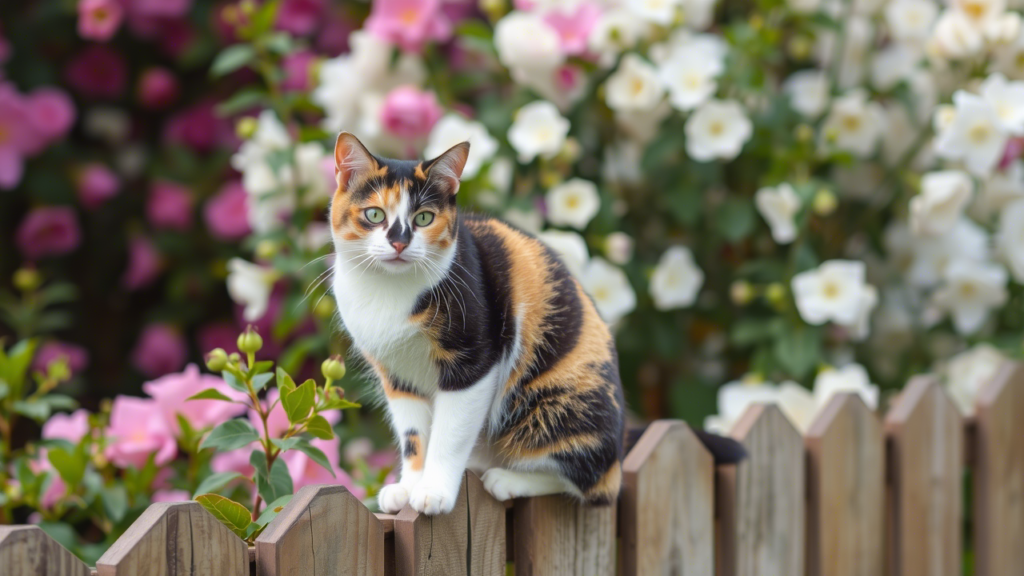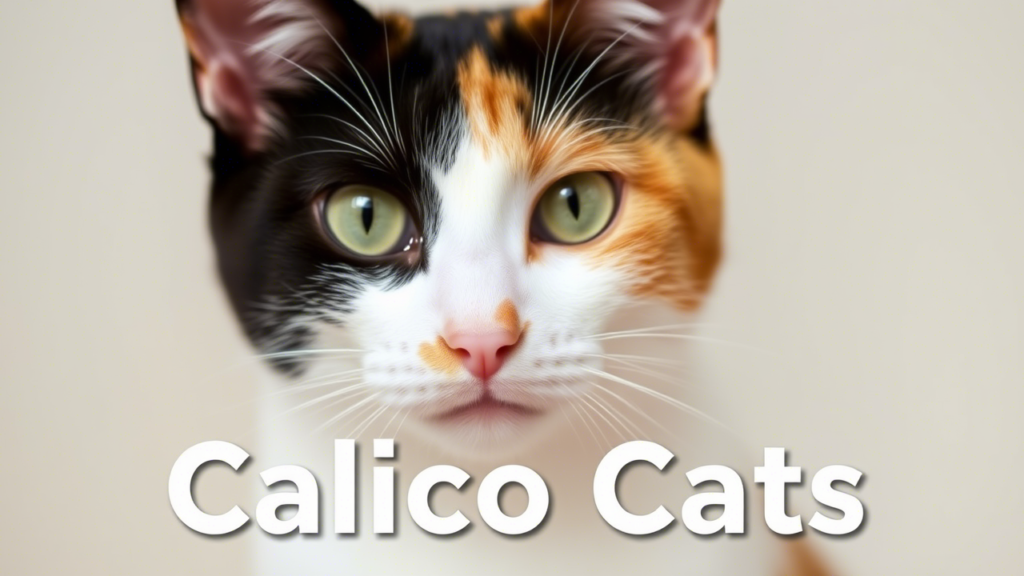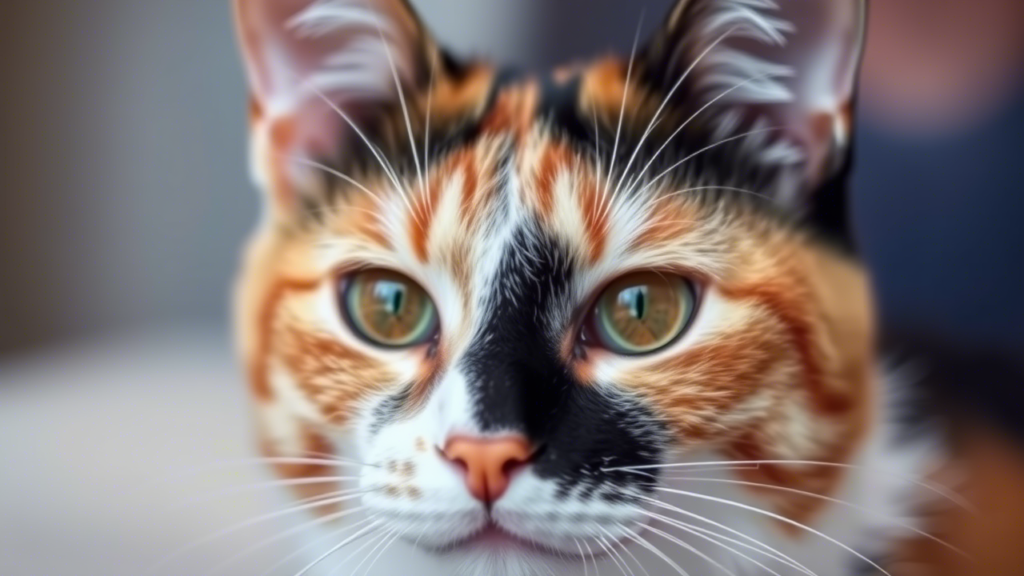Caring for Your Calico Cat: Tips, Tricks, and Tail-Wagging Advice
calico cats ( breed, autistic, female, price, lucky, personality, are female because, Tortoiseshell calico cat, are always female, rare, for sale, x inactivation )
Introduction
Calico cats are known for their stunning coats, vibrant personalities, and unique characteristics. If you’re lucky enough to have one of these beautiful felines in your home, you may be wondering how to best care for them. Understanding the special needs of a calico cat is key to keeping them happy and healthy. In this article, we’ll explore the ins and outs of caring for your calico cat, covering everything from diet and grooming to behavioral traits and medical care. Whether you’re a first-time cat owner or a seasoned pet parent, these tips, tricks, and expert advice will help you build a strong bond with your calico companion.

What Makes Calico Cats Special?
Before diving into the specifics of cat care, let’s take a moment to understand what makes calico cats so unique. Calico is not a breed, but a color pattern that is found in several cat breeds, including the domestic shorthair, longhair, and more. Calicos typically have a three-colored coat, usually with white, black, and orange (or cream). The mix of these colors gives them their signature look, and no two calico cats are exactly the same.
Read More:- Calico Cats 101: Everything You Need to Know About These Tri-Colored Felines
But it’s not just their appearance that sets them apart. Many people believe that calico cats have a particular temperament and are known for being strong-willed, independent, and sometimes a bit feisty. While this can be true, every cat is an individual, and your calico’s personality will depend on various factors like genetics, environment, and early socialization.
1. Providing the Right Diet for Your Calico
Like all cats, calicos are obligate carnivores, which means their diet should be rich in protein. However, because calico cats often have different activity levels and health considerations, it’s important to choose a high-quality, nutritionally balanced food.
Key Considerations for Diet:
- Protein-Rich Foods: Look for food with named animal proteins (like chicken, turkey, or salmon) listed as the first ingredient. Calicos thrive on meat-based diets.
- Avoid Fillers: Avoid foods that contain excessive fillers like corn, wheat, and soy. These ingredients provide little nutritional value and can cause digestive upset in some cats.
- Portion Control: Calicos, like other cats, are prone to obesity if not properly monitored. Make sure you feed your cat the recommended portion sizes based on their age, weight, and activity level.
- Fresh Water: Keep fresh water available at all times. Cats are often not keen on drinking water, so consider a water fountain to encourage hydration, especially if your cat eats dry food.
You can always consult your vet to help determine the best diet for your calico cat’s specific needs.

2. Grooming Tips for Your Calico Cat
One of the first things you’ll notice about your calico is their beautiful coat. Whether it’s a short, sleek coat or a longer, fluffier one, calicos require regular grooming to keep their fur looking great and their skin healthy.
Grooming Guidelines:
- Brushing: Brush your calico’s coat regularly to prevent matting and tangles, especially if your cat has long hair. Brushing also helps reduce shedding and hairballs, which are common issues for cats.
- Nail Trimming: Regular nail trimming is important for your cat’s health and your furniture. Try to trim your cat’s nails every 1-2 weeks to prevent overgrowth and discomfort.
- Ear Cleaning: Keep an eye on your calico’s ears. Use a soft, damp cloth to clean the outer ear area if necessary. However, never insert anything into the ear canal itself.
- Bathing: Cats are generally good at grooming themselves, but if your calico gets into something sticky or messy, a bath may be needed. Use a cat-specific shampoo to ensure their skin stays healthy.

3. Health Care and Regular Vet Visits
Routine veterinary care is an essential part of keeping your calico in good health. Regular check-ups help catch health issues early, ensuring your cat lives a long, healthy life.
Veterinary Care Essentials:
- Vaccinations: Keep up with your calico’s vaccinations. Core vaccines such as rabies and feline distemper are essential, but your vet may recommend others based on your cat’s lifestyle.
- Parasite Prevention: Fleas, ticks, and worms are common problems for cats, and calicos are no exception. Regular flea treatments and deworming are vital for maintaining their health.
- Spaying/Neutering: If you haven’t already, consider spaying or neutering your calico. Not only does this prevent unwanted litters, but it also reduces the risk of certain health problems, including cancers and infections.
- Dental Health: Oral health is often overlooked but is crucial. Regularly brushing your calico’s teeth or providing dental chews will help keep their teeth and gums in good condition.
Read More:- Why Most Calico Cats Are Female (And What Happens When They’re Not)
4. Understanding Calico Behavior and Personality
While every cat is an individual, calicos are often described as having a feisty, independent nature. Many calicos are known for their spirited personalities, but they can also be affectionate and loving. Understanding your calico’s behavior can help you nurture a healthy, happy relationship with them.
Behavioral Insights:
- Playful and Curious: Calicos tend to be very curious and love exploring their environment. Interactive toys, puzzle feeders, and cat trees can help keep their minds sharp and engaged.
- Independent but Affectionate: While calicos can be independent and sometimes aloof, they also enjoy affection on their own terms. Be sure to provide them with plenty of opportunities for interaction and love without forcing it.
- Socializing: Early socialization is key to shaping your calico’s behavior. If you bring a calico kitten into your home, it’s important to expose them to various people, pets, and environments to prevent shy or fearful behavior later on.
- Attention to Changes: Calicos are sensitive to changes in their environment. Whether it’s moving to a new home or a change in routine, be sure to provide a safe, quiet space for your calico to retreat to while adjusting.
5. The Importance of Play and Enrichment
Playtime is a crucial part of your calico’s daily routine. It helps stimulate their mind and body, and it’s a great way to bond with your pet. Calicos are highly energetic and curious, so providing a variety of toys and activities will keep them entertained.
Fun Activities to Try:
- Interactive Toys: Toys that mimic prey, like laser pointers or feather wands, are great for calicos. These toys allow them to channel their natural hunting instincts.
- Climbing and Scratching: Calicos love to climb and scratch. Invest in a cat tree or scratching post to keep them from damaging your furniture and to give them a spot to exercise and stretch their muscles.
- Training Sessions: Believe it or not, calicos can be trained! Use treats and positive reinforcement to teach your cat simple tricks or commands. This provides mental stimulation and strengthens the bond between you and your feline friend.
6. Calico Cat Challenges: What to Watch For
While calico cats are generally healthy, they may face some specific health concerns due to their genetics and coat patterns. These include:
- Feline Hyperthyroidism: Older calico cats may be prone to hyperthyroidism, a condition where the thyroid gland overproduces hormones. Symptoms include weight loss, increased appetite, and hyperactivity.
- Polycystic Kidney Disease (PKD): Some calicos may inherit PKD, a genetic disorder that leads to kidney cysts. Regular vet check-ups and early detection are important for managing this condition.
Conclusion
Caring for a calico cat is a rewarding experience. With their unique looks and personalities, they bring a special spark to any home. By providing them with proper nutrition, regular grooming, health care, and mental stimulation, you can ensure that your calico remains a happy and healthy companion for years to come. Understanding their behavior and quirks will only strengthen the bond you share, making life with a calico even more fulfilling
FAQ
Q: Do calico cats have different temperaments than other cats?
While every cat is an individual, calicos are often described as independent, feisty, and strong-willed. They can also be affectionate and enjoy social interaction, but they may not always be as cuddly as some other breeds.
Q: Are calico cats prone to health problems?
Like all cats, calicos can experience health issues. Some conditions, such as polycystic kidney disease (PKD) and hyperthyroidism, may be more common in certain calico cats, but regular veterinary care can help prevent or manage these issues.
Q: How often should I groom my calico cat?
Grooming frequency depends on whether your calico has long or short fur. Long-haired calicos need more frequent brushing (several times a week) to prevent matting, while short-haired calicos can be brushed once a week to reduce shedding and hairballs.
Q: Can I train my calico cat?
Yes! Calicos can be trained using positive reinforcement methods like treats and praise. Start with simple tricks like “sit” or “high-five” to engage your calico’s mind and create a deeper bond.
